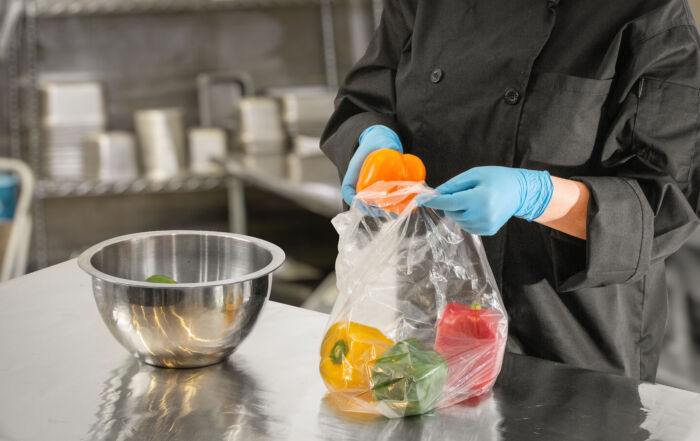Dry Food Storage – How Vital is it to Food Safety?
Common in many food safety training classes is a rich discussion about many topics – produce storage temperatures, the temperature at which eggs should be delivered, how to wash hands, how to properly calibrate a thermometer. One thing we often don’t talk about is the importance of proper dry storage. I remember going through our food safety inspection at the restaurants and the inspector would look at it – but it was really a superficial glance at the area.
If you look at many foodservice businesses, the dry storage area makes up a large portion of their overall inventory. Proper dry food storage is not just about keeping ingredients on the shelves; it’s about keeping them safe and maintaining a proper quality, so we don’t have waste. Here are some tips to help protect those dry goods in your inventory:
…safeguarding dry-stored items may not be as vital as our perishable items in the overall scheme of your food safety plan. But it is still important to a strong and active food safety (and food quality) program.
Keep it Dry
The first, and likely most important, rule of the dry storage area is to keep it dry. Moisture is the nemesis of many dry goods, causing clumping, mold growth, and an overall deterioration in quality. To combat this, having a climate-controlled storage area with proper ventilation is paramount.
Keep out Pests
How many remember the 6” rule? It is the one portion of protecting dry goods that is included in the food code. Pests are unwelcome guests in any kitchen and pose a significant threat to the integrity of dry goods. Being proactive with your pest prevention plan is crucial. Make sure your staff seal all dry goods to create a barrier against insects and rodents. Inspect storage areas regularly and be sure the area is being thoroughly cleaned by your staff. At our business, we ran into issues with no one wanting to “claim” the dry storage area, so we assigned it to our dish room staff. Be sure to inspect it regularly to make sure cleaning is taking place as expected.
Maintain Temperature Consistency
While dry goods are not as temperature sensitive as other raw ingredients we might deal with on a daily basis, maintaining a consistent temperature of the dry storage area will help to preserve the quality. While there is no official temperature, most will indicate that a good goal is to keep your dry storage area between 50ºF and 70ºF.
As always, be sure to label any open food. And never, never, never store chemicals in the same area as your food supplies. Several years ago, before there were any regulations that prohibited this practice, there was an incident at a mental hospital in Oregon where a patient who was helping in the kitchen mistakenly brought back roach poison, instead of the powdered milk he was asked to retrieve. This poison was then accidentally mixed into the scrambled eggs. Within minutes of consuming the tainted eggs, patients started to die. In the end, 47 patients died. While this is an extreme example andm any operators will say this would not happen in their business, we often find chemicals (even single bottles) mistakenly left in or around food supplies.
In the end, safeguarding your dry-stored items may not be as vital as our perishable items in the overall scheme of your food safety plan. But it is still important to a strong and active food safety (and food quality) program.
Don’t forget to check out our most recent SafeBites Webinar, “Cold and Flu: Prepare for the Season…it’s Coming!” If you have any topics you’d like us to address in 2024, please reach out and let me know. In the meantime, all of us here at FoodHandler wish you the very merriest of holiday seasons. Risk Nothing.
READ MORE POSTS
Preventing Norovirus in your Foodservice Operation
Norovirus is one of the leading causes of vomiting and diarrhea in the United States, [...]
Safe Handling of Leftovers in Foodservice Operations
In any foodservice operation, leftovers are inevitable. After managing a family-style restaurant, where all-you-can eat [...]
Turn your Health Inspector into your Food Safety Ally
For many foodservice operators, keeping up with evolving regulations can feel like chasing a moving [...]
Time and Temperature: Why 41°F to 135°F?
In one of my last blogs, I mentioned the temperature danger zone, or TDZ, as [...]










